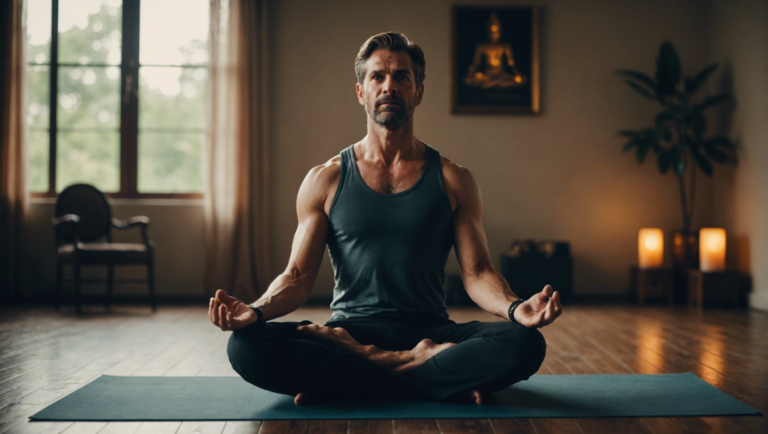Is Yoga Considered A Sport: An In-depth Analysis
The Debate Over Yoga as a Sport: A Comprehensive Analysis
Understanding the Complexity of Yoga as a Sport
Within the realm of physical activity, few debates are as nuanced or as spirited as the discussion surrounding yoga’s classification. Is yoga a sport, a form of exercise, a spiritual practice, or perhaps a blend of all three? To unpack this question, it’s imperative to delve into the multifaceted nature of yoga itself, exploring its origins, objectives, and how it’s perceived and practiced around the globe.
Origins and Evolution of Yoga
Yoga, with its roots deeply embedded in ancient Indian philosophy, has transcended its initial spiritual purpose to become a global phenomenon that encompasses various aspects of physical and mental well-being. Initially aimed at spiritual growth and the attainment of enlightenment, yoga has evolved to include practices focused on enhancing flexibility, strength, and mental discipline. This transformation has been pivotal in yoga’s journey from ancient tradition to modern activity, which some argue qualifies it as a sport.
The Criteria for Defining Sports
Sports are typically characterized by elements of competition, skill, physical exertion, and a set of rules or guidelines. When analyzing yoga through this lens, the argument takes shape. Competitive yoga, for instance, assesses participants on their ability to perform asanas (poses) with precision, control, and grace, qualities that echo the competitive spirit found in more universally recognized sports.
Yoga Competitions: A Case for the Sporting Aspect
Yoga competitions, though somewhat controversial within the yoga community, present a compelling case for yoga’s classification as a sport. These events, which often emphasize physical skill and discipline, are not about winning in the conventional sense but rather about personal and spiritual growth. However, the existence of a competitive framework—complete with judges, scores, and winners—underscores the sporting dimension of yoga.
Yoga: Beyond Physicality
At the heart of the debate, however, is yoga’s transcendent aspect, which distinguishes it from traditional sports. Yoga’s ultimate goal extends beyond physical achievements, aiming for the harmony of body, mind, and spirit. This holistic approach, focusing on personal growth and inner peace, challenges the notion of yoga as a sport, emphasizing its role as a comprehensive lifestyle.
Global Perception and Cultural Impact
Globally, the perception of yoga varies widely, influenced by cultural, spiritual, and individual factors. In some cultures, yoga remains primarily a spiritual or meditative practice, while in others, it has been adopted as a form of physical exercise or even a competitive sport. This global diversity in practice and perception further complicates the classification of yoga, reflecting its adaptability and the broad spectrum of human experience it encompasses.
The Role of Intention in Yoga Practice
Fundamentally, the classification of yoga may boil down to the intention behind its practice. For those who approach yoga with an emphasis on physical prowess and competition, it aligns more closely with the characteristics of a sport. Conversely, for practitioners focused on the spiritual and mental discipline aspects of yoga, its classification as a sport may seem reductive or even contrary to its core principles.
The Ongoing Debate and Personal Interpretation
Ultimately, the debate over yoga’s classification as a sport is unlikely to yield a definitive verdict, reflecting the breadth and depth of yoga as a practice. It straddles the boundaries between physical activity, spiritual discipline, and competitive sport, defying easy categorization. Perhaps, then, the most valuable perspective acknowledges yoga’s multiplicity, celebrating its ability to be profoundly personal and universally inclusive simultaneously.
In navigating the lively debate over yoga’s place within the pantheon of physical activities, it’s clear that yoga transcends simple labels. Whether regarded as a sport, a spiritual practice, or both, yoga offers a unique space for exploration and growth, challenging and enriching practitioners in myriad ways. This versatility, perhaps more than anything, underscores yoga’s enduring appeal and the depth of its impact on individuals and cultures worldwide.
The Evolution of Yoga: From Ancient Practice to Competitive Arena
Yoga, a system of physical postures, breathing techniques, and meditation, has transcended its origins to become a global phenomenon. Initially rooted in ancient Hindu philosophy and aimed at spiritual enlightenment, it has morphed through the ages, witnessing a significant transformation in its purpose and practice. This comprehensive analysis delves into the fascinating journey of yoga from an ascetic discipline to its contemporary status as both a popular means of physical fitness and a competitive sport.
The Ancient Roots of Yoga
Yoga’s inception dates back over 5,000 years, with its philosophical underpinnings found in ancient Indian texts like the Vedas and the Upanishads. Originally, it served as a means to cultivate discipline, health, and a deep connection to the divine. The practice was holistic, encompassing moral guidelines (Yamas and Niyamas), physical postures (Asanas), breathing techniques (Pranayama), and meditation (Dhyana), guiding practitioners towards self-realization and enlightenment.
The Global Spread and Transformation of Yoga
The late 19th and early 20th centuries marked yoga’s introduction to the Western world, where it was initially embraced for its spiritual and philosophical aspects. However, as it intertwined with Western culture, the focus gradually shifted from spiritual enlightenment to physical health and well-being. Pioneers like B.K.S. Iyengar and Pattabhi Jois were instrumental in this transformation, emphasizing the physical aspects of yoga—particularly its ability to enhance flexibility, strength, and mental focus.
Yoga in the Modern World: A Dual Identity
Today, yoga wears a dual identity with remarkable grace: it is both a spiritual journey and a modern fitness trend. Millions of people across the globe turn to yoga for its health benefits, which include stress reduction, improved flexibility and posture, enhanced concentration, and better overall physical health. The practice has evolved to encompass various styles, from the slow and meditative Yin Yoga to the physically demanding Ashtanga Yoga, catering to a wide spectrum of preferences and fitness levels.
The Advent of Competitive Yoga
A more recent development in yoga’s evolution is its emergence as a competitive sport. This concept diverges significantly from yoga’s traditional spiritual goals, focusing instead on the perfection of asanas in competitive formats. Competitors are judged on their flexibility, strength, balance, and the execution of specific postures. This has sparked debate within the yoga community, with purists arguing that competition undermines yoga’s intrinsic values of inner peace and self-realization.
The Debate: Sport vs. Spiritual Practice
The question of whether yoga should be considered a sport hinges on one’s interpretation of what yoga truly is. For some, yoga as a competitive sport is a natural evolution of the practice, allowing for personal achievement and recognition. It introduces yoga to a broader audience, potentially encouraging physical fitness and discipline. Critics, however, maintain that competition introduces ego into a practice fundamentally centered on transcending the self and fostering unity with the divine.
The Future of Yoga: Balancing Tradition and Innovation
As yoga continues to flourish globally, it faces the challenge of balancing its ancient roots with its modern incarnations. While the debate over yoga as a sport persists, its adaptability and resilience suggest that it can embrace this duality. The essence of yoga—its capacity to transform, heal, and unite—remains steadfast, transcending the boundaries of time and culture.
Yoga’s journey from ancient spiritual practice to a modern-day sport and wellness activity underscores its enduring relevance and adaptability. As it evolves, yoga continues to offer profound benefits to individuals and communities, inviting everyone to explore its depths in whichever form resonates most deeply with them. Whether through the meditative pursuit of enlightenment or the competitive display of physical prowess, yoga remains a testament to the human spirit’s quest for connection, health, and harmony.
Defining Sport: Where Does Yoga Fit Into the Picture?
Yoga, an ancient practice originating from India, has transcended its geographical and cultural boundaries to become a global phenomenon. It intertwines physical postures, breath control, and meditation to achieve a state of physical and mental well-being. However, the evolving nature of yoga, especially as it integrates into Western societies, raises a fascinating question: can yoga be classified as a sport? This inquiry invites a nuanced examination of what constitutes sport and the multifaceted dimensions of yoga.
The Essence of Sport: A Broad Perspective
Sports are traditionally characterized by elements of competition, physical exertion, skill, and a set of rules or customs. By this definition, activities ranging from football to chess are recognized as sports, each with its unique physical and mental demands. The International Olympic Committee (IOC) further broadens this definition to include activities that contribute to physical fitness, mental well-being, and social interaction, acknowledging the diverse nature of sport.
Unveiling the Athletic Dimensions of Yoga
Yoga’s classification can be contentious, largely because its practice varies immensely. There are forms of yoga that are undeniably physically demanding, such as Ashtanga, Vinyasa, and Power Yoga. These styles emphasize strength, flexibility, and stamina, aspects that align closely with conventional sports. They entail a rigorous sequence of poses that challenge the body, akin to athletic training. Participants often pursue personal benchmarks in flexibility, balance, and strength, mirroring the goal-oriented nature of sports.
Yoga Competitions: The Competitive Edge
The concept of competition in yoga introduces another layer to this debate. Yoga competitions, though a lesser-known facet of the practice, do exist. Here, practitioners demonstrate their proficiency in various asanas (postures) before a panel of judges who score based on form, difficulty, and execution. These competitions aim to highlight the artistry and technical skill of yoga, further blurring the line between sport and spiritual practice. However, it’s crucial to note that these events represent a small portion of the yoga community, with many practitioners and teachers opposing the notion of competition in a discipline rooted in personal growth and inner peace.
Yoga’s Broader Impact Beyond Athleticism
To view yoga solely through the lens of sport or physical activity is to overlook its comprehensive impact on an individual’s health and well-being. Unlike most sports, yoga encompasses a spiritual and mental dimension, offering a holistic approach to wellness that integrates the body, mind, and spirit. Its practices foster a deep sense of mindfulness, stress reduction, and emotional balance, benefits that extend beyond the physical improvements often associated with sports.
Societal Perceptions and Modern Adaptations
The perception of yoga as a sport also varies by cultural context. In Western countries, where competitive sports are deeply ingrained in society, yoga is frequently approached as a form of physical exercise, with less emphasis on its spiritual and meditative aspects. Conversely, in its birthplace of India and other Eastern societies, yoga is primarily seen as a spiritual and ascetic discipline, with a greater focus on meditation and enlightenment.
Engaging with Yoga: A Personal Journey
Ultimately, whether yoga is viewed as a sport, a spiritual practice, or a hybrid of both is subjective and reflects the diverse aims and experiences of its practitioners. What remains consistent, however, is yoga’s adaptability and its capacity to meet individuals where they are, offering benefits that cater to a wide array of needs and preferences.
As yoga continues to evolve and integrate into different cultures worldwide, its classification may remain fluid. However, this does not diminish its value or the profound impact it has on millions of people. The essence of yoga lies in its ability to transcend categories, fostering a universal connection to oneself and the broader community.
The Physical and Mental Challenges of Yoga: A Sporting Perspective
Yoga, often perceived merely as stretching or relaxation exercises, transcends these boundaries, emerging as a discipline that encompasses both physical and mental rigor. Its comparison to sports arises from its competitive spirit and the challenges it poses, which demand a level of physical fitness, mental concentration, and discipline akin to conventional sports. This exploration unravels the depth of yoga’s challenges and posits it within the sporting arena, inviting a broader understanding and appreciation of its complexities.
The Athletic Rigor of Yoga Practices
Yoga practices push the boundaries of what is commonly understood as physical fitness. Rather than focusing on the outward appearance of strength or agility, yoga delves into the development of core strength, flexibility, and balance. These elements are crucial in achieving the various asanas (poses) that range from the seemingly simple to the remarkably complex. The precision required in executing these asanas involves an understanding of one’s body and its limitations, often pushing these to gently expand the practicer’s physical capabilities.
Moreover, the progression in yoga practices, from beginner to advanced levels, mirrors the training regimens of athletes. Each asana builds upon the last, promoting continuous physical growth and challenge. The sustained practice is akin to athletic training, where improvement and mastery are the results of persistent effort and commitment.
Mental Resilience and Concentration
Beyond the physicality, yoga is a mental exercise in focus, concentration, and inner peace. The philosophy of yoga emphasizes the unity of mind and body, where achieving a challenging pose is as much about mental fortitude as it is about physical capability. This mental aspect is where yoga aligns closely with sports psychology, focusing on achieving a state of flow — a concentrated awareness where individuals are fully immersed in an activity.
The requirement for mental resilience in yoga is evident in practices such as meditation and pranayama (breath control). These practices, while seeming to be passive activities, require significant mental discipline, concentration, and control. The benefits, including reduced stress levels and improved mental clarity, are invaluable to athletes and non-athletes alike, showcasing yoga’s comprehensive approach to fitness that transcends the purely physical.
The Competitive Spirit of Yoga
While traditionally not competitive in the same way as most sports, yoga has seen the rise of competitions, where practitioners showcase their skills in performing asanas. These events, recognized on global platforms, highlight the competitive aspect of yoga, further cementing its place within the sphere of sports. Participants are judged on criteria similar to gymnastics, such as form, difficulty, and presentation, showcasing the high level of skill and dedication required.
However, it’s essential to recognize that the competition in yoga can also be internal, where individuals challenge themselves to improve and achieve personal bests. This internal competition fosters a healthy attitude towards self-improvement and personal growth, reflecting the spirit of sportsmanship.
In considering whether yoga can be deemed a sport, it becomes clear that its practices embody the physical and mental challenges characteristic of sports. The physicality required in mastering asanas, combined with the mental discipline of meditation and concentration, presents a comprehensive challenge that rivals that of traditional sports. The competitive aspect, both in formal competitions and in personal improvement, further aligns yoga with the sporting world.
Yoga, with its deep roots in philosophical tradition, transcends the typical boundaries of physical fitness, presenting a holistic challenge that engages the body, mind, and spirit. Its recognition as a sport is not about diminishing its spiritual aspects but rather acknowledging the rigorous discipline it demands, which is akin to any athletic pursuit. In this light, yoga indeed stands as a testament to the enduring quest for human excellence, embodying the essence of sportsmanship in its truest form.
Insights from Practitioners: Yogis on Yoga as Sport
The Nexus of Yoga and Competitive Spirit: Insights from Yogis
Yoga, an ancient practice rooted in an amalgamation of physical, mental, and spiritual disciplines, has traversed a long path from the secluded ashrams of ancient India to the contemporary, bustling fitness studios around the globe. Its evolution raises an intriguing question: Can yoga, primarily known for its holistic benefits and meditative qualities, be considered a sport? To dissect this complex topic, insights from seasoned yogis provide a well-rounded perspective on yoga’s place within the realm of competitive activities.
Delving into the Athletic Dimensions of Yoga
Often, the image that comes to mind when one mentions yoga is that of tranquility, stretching, and perhaps a peaceful setting. However, beneath this serene surface lies a rigorous discipline that demands physical strength, flexibility, endurance, and meticulous control over one’s body. Yogis who approach their practice with an emphasis on these athletic components argue that yoga can indeed be viewed through a competitive lens, reminiscent of more conventional sports.
One critical aspect highlighted by practitioners is the existence of yoga competitions, particularly in the discipline of Ashtanga Yoga, which showcases the extraordinary physical feats achieved through dedicated practice. These competitions, which assess participants on their flexibility, strength, and execution of complex poses, underscore the athletic prowess required for high-level yoga practice.
The Philosophical Underpinnings: Yoga Beyond Physicality
While the athletic dimensions of yoga are palpable, it’s the philosophical underpinnings that set it apart from traditional sports. Yoga’s primary goal transcends physical achievements, aiming for the union of body, mind, and spirit. This holistic approach is central to the practice, emphasizing personal growth, self-awareness, and enlightenment over external validation or competition.
Practitioners keen on this aspect caution against reducing yoga to merely physical performance, as doing so could undermine the rich, spiritual heritage that defines it. They argue that the essence of yoga lies in its ability to foster inner peace and contemplation, which stands in contrast to the competitive ethos characterizing most sports.
A Hybrid Practice: Competitive Yoga’s Place in Modern Times
In contemporary times, a new hybrid form emerges—competitive yoga—bridging the gap between traditional yogic philosophy and the modern sports arena. This variation seeks to balance the inherent contradiction between yoga’s non-competitive roots and the competitive nature of sports. By focusing on the personal achievement of excellence rather than defeating an opponent, competitive yoga aims to honor the core principles of yoga while adapting to the contemporary context of sports.
Yogis engaged in this hybrid practice argue that competition, when approached with the right mindset, can serve as a powerful motivator for improvement, self-discipline, and community building. It offers a platform for practitioners to challenge themselves, celebrate achievements, and push the boundaries of what is physically possible, without losing sight of yoga’s spiritual goals.
Embracing Yoga’s Multifaceted Nature
The question of whether yoga can be considered a sport does not yield a straightforward answer. Instead, it opens up a rich dialogue about the multifaceted nature of yoga. Insights from yogis reveal that while yoga possesses competitive elements akin to those found in sports, its essence remains rooted in the pursuit of balance, inner peace, and self-realization.
This duality suggests that yoga can coexist in both worlds—serving as a personal spiritual practice for some while offering an arena for physical and athletic excellence for others. Ultimately, the categorization of yoga as a sport, a spiritual discipline, or a hybrid lies in the eye of the beholder, shaped by individual perspectives, intentions, and values.
The ongoing dialogue among yogis and practitioners worldwide highlights the dynamic and adaptable nature of yoga, ensuring its relevance and vitality across cultures and contexts. As yoga continues to evolve, it invites us to reconsider our definitions of sport, competition, and personal growth, encouraging a more inclusive and holistic view of physical activity and well-being.
Conclusion
Navigating through the winding path of understanding yoga’s place within the competitive and traditional realms of sport, one is faced with an extensive range of perspectives, insights, and historical contexts. The journey from its ancient origins to the present-day arena where it is occasionally seen as a competitive discipline illuminates the multifaceted nature of this practice. It allows us to explore not just the physical and mental exigencies that it demands, akin to any sport, but also the rich cultural and spiritual heritage it carries. As we delve deeper into these discussions, it becomes evident that yoga transcends conventional categorizations, embodying elements that are both timeless and adaptable to contemporary interpretations.
The comprehensive analysis of the debate over yoga as a sport reveals an intricate mosaic of viewpoints. Here, the confrontation is not merely over terminological precision but touches the essence of what yoga represents for many. From its evolution, we observe a practice that has sprawled across centuries, constantly morphing and adapting, yet retaining its core principles. The competitive aspect of yoga, while it may seem like a departure from its origins, offers a new dimension to its practice, signaling a transformative era where ancient traditions meet modern competitive spirits.
In attempting to fit yoga within the structured definitions of sport, we are reminded of the inherent challenge in such an endeavor. The criteria that traditionally define a sport — including competition, skill, physical exertion, and entertainment — are dimensions that yoga can fulfill, yet its philosophical underpinnings and the emphasis on personal growth and enlightenment transcend these measures. The physical and mental challenges of yoga underscore its sporting qualities, drawing parallels with the rigorous training, discipline, and focus required in sports. However, yoga distinguishes itself through its holistic approach, aimed at harmonizing body, mind, and spirit.
Insights from practitioners, or yogis, afford us a deeper understanding of what yoga signifies beyond its potential label as a sport. For many, yoga is a way of life, an irrevocable part of their existence that transcends the physical realm to touch on the spiritual and emotional facets of human experience. The notion of competitiveness, while present for some, is secondary to the personal journey of self-discovery and improvement that yoga facilitates. This perspective illuminates the core discrepancy in the debate: the objective measurement of sport versus the subjective experience of yoga.
Through the lens of these diverse discussions, it becomes apparent that reducing yoga to a mere sport does not do justice to its profound essence and the diverse experiences it offers to practitioners. While it shares attributes with sports, particularly in contexts where competition is emphasized, yoga’s essence lies in its capacity to foster an internal journey of growth, self-awareness, and unity with the universe. That being said, recognizing yoga within competitive frameworks can also shine a light on its versatility and the incredible skill and dedication of its practitioners, without detracting from its spiritual and philosophical core.
As we weave through the complexities of these perspectives, it becomes clear that yoga’s identity is not confined within the binary of being either a sport or a purely spiritual practice. Instead, it encompasses a spectrum where physicality, competition, spirituality, and philosophy coexist and enrich one another. The acknowledgment of yoga in both the arenas of traditional practice and modern-day sport serves to broaden our understanding and appreciation of its multifaceted nature. It encourages a more inclusive view that recognizes the myriad ways in which individuals engage with yoga, whether as a form of physical exercise, a competitive sport, a spiritual practice, or a hybrid of these dimensions.
Thus, the discourse surrounding yoga as a sport not only probes into the definitions and boundaries of what constitutes a sport but also invites a deeper reflection on the evolving nature of yoga itself. It challenges us to consider how ancient practices can find relevance and new expressions in the contemporary world, all while fostering a more inclusive and comprehensive appreciation for the enduring legacy and transformative potential of yoga. Far from needing a definitive classification, yoga thrives in its ambiguity, offering a rich tapestry of experiences that cater to the physical, mental, and spiritual aspirations of individuals across centuries and cultures.




